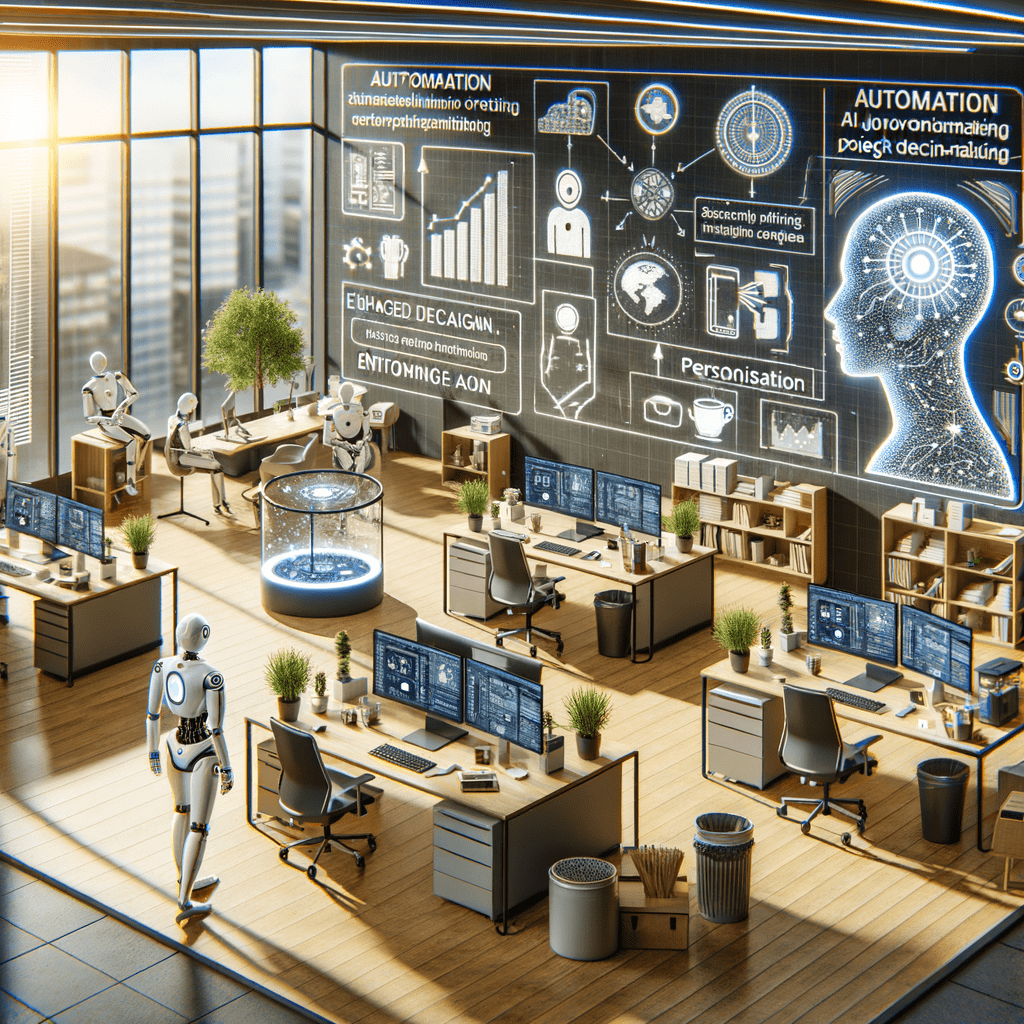How can AI improve workplace productivity? Many business owners and team leaders are exploring this question, seeking ways to boost productivity growth. AI offers practical solutions, enabling teams to work smarter, not harder. AI tools are no longer a futuristic dream; they’re actively reshaping the modern data landscape.
This article explores how AI is transforming various workplace operations. We’ll examine the benefits and drawbacks, providing a comprehensive understanding of AI’s potential.
How AI Can Improve Workplace Productivity
Automating the Mundane
AI excels at handling repetitive tasks typically done by human workers. Data entry, scheduling, and basic customer service interactions are prime examples. Automating these tasks frees up your team. This allows them to focus on strategic and creative work.
This shift improves job satisfaction and boosts efficiency. Studies show generative AI tools often enhance task completion speed and, at times, even improve product quality. These tools can provide considerable productivity gains.
Streamlining Communication & Collaboration
AI-powered tools facilitate better team communication. Real-time translation, automated meeting summaries, and smart email filtering improve workflow. This ensures everyone stays informed and aligned.
One study found AI significantly increased employee productivity. AI can positively impact how teams collaborate and communicate.
Enhanced Decision-Making
AI analyzes large data sets, uncovering hidden trends and insights. This data-driven approach informs strategic planning. Predicting customer behavior and managing risk are key examples.
AI equips businesses to make better, more informed decisions. These data sets provide an invaluable understanding of various aspects impacting productivity measures.
Personalized Training & Onboarding
AI personalizes employee training based on individual learning styles and needs. This targeted approach accelerates onboarding. It ensures employees receive the most relevant information for their specific roles. AI can save money and resources through effective, tailored training solutions.
Navigating the Changing Landscape
While AI offers tremendous potential, it’s not a magic bullet for all business problems. AI excels at routine tasks like creating reports and press releases based on input parameters (Noy and Zhang 2023).
However, relying solely on AI for complex situations with unpredictable real-world interactions can be problematic. Current AI systems sometimes struggle with interpreting complex data requiring external context.
While a generative AI tool improves performance on basic tasks by as much as 40%, performance declines for more complex situations. AI works best in partnership with human expertise and insight.
Data Security, Bias, & Ethics
AI adoption raises important questions regarding data security, bias, and ethics. Ensuring user and company data protection is paramount.
Research indicates AI models can amplify existing biases. This can lead to negative unintended consequences. Ethical considerations around the appropriate use of AI are also crucial. Addressing these issues proactively is essential for responsible AI implementation.
FAQs about How AI can improve workplace productivity
How does AI increase productivity in the workplace?
AI automates tasks, provides data-driven insights, and personalizes experiences. This frees human workers for strategic and creative endeavors. This also leads to output produced that has fewer errors and may boost worker productivity.
Can AI increase business productivity by 40%?
Studies suggest AI can increase productivity by nearly 40% for higher-skilled workers on specific tasks within the AI’s domain. However, productivity may decrease for complex tasks outside its competence (MIT Sloan). Understanding ai’s impact requires more investigation, but it’s safe to say it increases efficiency and saves valuable time. Much research on enterprise AI is needed on a longer-term timescale with larger sample sizes. It can be used on larger research and writing tasks where the output can be very involved.
How are you going to use AI to improve your work?
I use AI for content outlines, research collection, writing, coding, debugging, and creating customized outputs. This automation improves efficiency and frees up time. AI summarizes information, synthesizes knowledge, and presents data in novel ways. This enhances creative work and allows for a greater understanding of machine learning, including the underlying natural language process involved.
Focusing less on mundane tasks improves strategic work. This boosts productivity and knowledge acquisition. AI enhances creativity and helps me serve clients and customers better. This service provides quality improvement and minimizes errors by assisting in complex tasks and resolving quality rating issues promptly.
Ultimately, AI helps produce higher productivity levels by streamlining tasks like scheduling, automating emails, translating content into various languages, as well as generating original content of substantial volume from smaller data. This improves my overall workflow, generates more output in terms of words or characters generated by saving hours daily and enables me to explore more complex creative work in the service industry, as well as the management software business. In short, generative AI, using a method sometimes known as natural language processing allows the generative artificial intelligence of the system to function similarly to humans for a given set of constraints.
What are the positive impacts of AI in the workplace?
AI offers numerous positive impacts. These include increased efficiency, reduced costs, improved decision-making, and enhanced employee experiences.
However, consider potential bias issues. Maintaining a positive employee culture is crucial during AI integration. The gains from increased efficiency don’t always directly benefit lower-skilled workers financially.
Unless workers upskill for more complex, higher-paying jobs, a productivity-pay gap can emerge. Data suggests this gap can be significant. Therefore, addressing the productivity effects of AI implementation should also encompass appropriate policies around wages to allow worker benefit alongside the organization as productivity gains allow, while at the same time protecting jobs and the employment rate for unskilled labor.
Leveraging AI for Workplace Productivity
How AI can improve workplace productivity is a complex question. It involves finding a strategic balance that not only prioritizes increased profits and productivity but also addresses employee needs and responsible AI use.
Like any tool, AI has strengths and limitations. Understanding these is crucial for successful integration. A clear adoption strategy, including employee education and change management, fosters a collaborative environment where humans and AI work together effectively. Looking ahead and preparing accordingly, while involving your team, is essential. Addressing how AI can improve workplace productivity can lead to increased productivity growth and higher worker output. Maintaining a positive team culture, prioritizing security, and ensuring a positive work experience are equally vital.




